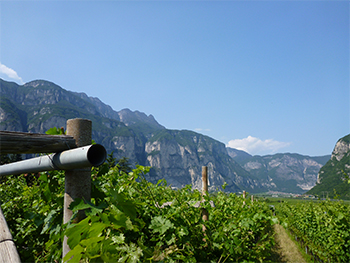
View from John Owen’s internship across Europe. As he described the day in northern Italy, “Majestic mountains and castles towered over the landscapes. Vineyards covered the entire valley floor.” Not a bad way to spend your summer, Jay!
Each year we have 25-30 students interning around the world. Some choose to use this blog (students categorized by year) and others have a separate blog. This summer see our group of Cornell Cooperative Extension bloggers; junior Rain Hennessey interning in Western NY working with youth education and GIS, sophomore Kaitlyn Kelder working on agricultural pests in the Hudson Valley, sophomore Kelly Albanir working in Delaware County with field crops and nutrient management, and senior Richard Smith also working in the Hudson Valley with the Master Watershed Steward program. Joining Brooke Parsons and Daniel Boucher in their viticulture and enology internships, senior John Owens is traveling Europe learning and interning in Switzerland.






